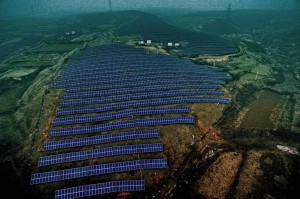China To Put Less Energy Into Clean Power
< < Go Back
Construction of solar panels and wind farms hasn’t been matched by electricity grid upgrades.
China’s unbridled ambitions for clean energy led to the construction of two wind turbines every hour in recent years. Now, there is a new demand: slow down.
In the U.S., President-elect Donald Trump has been extolling the virtues of coal. But China, which suffers from crippling air pollution, has promised the world it is shifting toward cleaner power sources like wind and solar.
So it came as a surprise to some industry observers when the country’s energy authority in November slashed wind and solar targets through 2020, dialing back the pace in a sector it views as strategic.
China isn’t any less committed to cleaner air. But the breakneck construction of solar panels and wind farms haven’t been matched by upgrades of an electricity grid more suited to coal. That has led to huge waste: Roughly one-fifth of wind power currently goes undistributed; in some parts of China, it is closer to half.
Meanwhile, a slowing economy has caused China’s overall power needs to plateau, amplifying worries that after a long boom, the wind and solar sectors could risk a bust.
“The government needed to give a policy sign that everybody had to cool down,” said Paolo Frankl, head of the International Energy Agency’s renewable-energy division. The message, he said, was: “We cannot go ahead like this.”
China is the world’s biggest growth market for clean power. Just this year, it will have installed more solar power than the entire electrical capacity of Switzerland, likely topping 30 gigawatts.
Executives and industry observers now expect that pace to slow by as much as half in the coming years.
In its newly issued five-year plan for power, China’s government targets total installed solar capacity of 110 gigawatts by 2020, down from earlier guidance by officials of 150. On wind, the government now aims for 210 gigawatts of installed capacity, down from 250.
China’s pledge to have its carbon emissions stop rising by 2030 isn’t in doubt. Some academics believe that because of the slowing economy, emissions may have already peaked.
Yet, the lower clean-energy goals signal the huge role coal will continue playing in China for years to come. Based on government projections, China will possibly add more power capacity from coal in the coming years than from solar and wind combined. That is partly the result of local governments seeing new coal power plants as good for growth, with more jobs from mining and related industries.
That will deepen a power glut. After years of concern that China wouldn’t have enough electricity to fuel its economic rise, that growth is slowing and shifting away from power-hungry sectors such as manufacturing. As a result, the growth in electricity demand has dropped from double-digits in recent years to less than 3% in the first half of 2016.
Chinese officials acknowledge that power-utilization rates are likely to fall.
The wind sector in particular has become a case study of the difficulties in integrating clean energy into the power mix.
Particularly in windy, remote regions in the northwest, transmission lines haven’t kept up. Access to the grid has also been tougher for wind operators than for coal-power generators with longstanding relationships with the arbiters of China’s power lines.
Among the issues is the way in which power has been sold in China, under long-term generating contracts that give coal plants roughly equal operating hours. Unlike some places in the West, where renewable sources can compete against coal in a sort of spot market for electricity, fixed tariffs set by the government for renewables tend to be more expensive than coal.
The government says it is aware of the problems and has vowed to fix them. It is in the early stages of an lengthy effort that could ultimately help to better integrate clean energy into the power mix.
More From The Wall Street Journal (subscription required):





